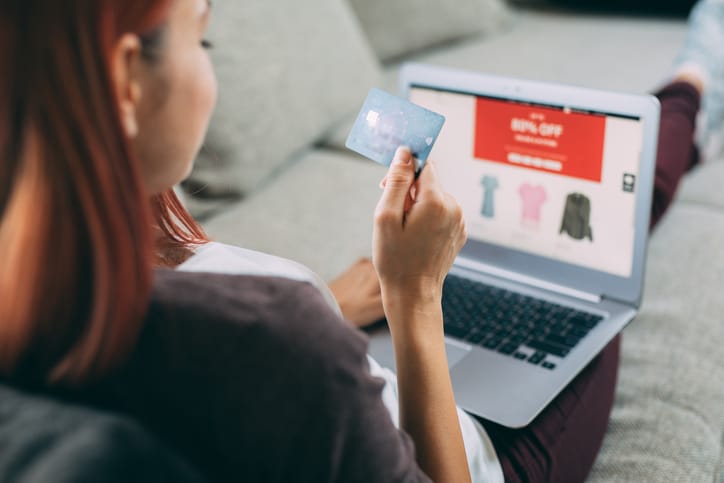
Did you know that those who master the art of upselling are leveraging a fragment of human psychology?
The upsell—that is, using a purchase as an opportunity to offer upgrades or add-ons—is a sales technique that has (unfairly) earned an unsavory reputation. The upsell, like many powerful strategies, has been leveraged by greedy marketers willing to sacrifice relationships for quick profits through pushing more products at the point of sale.
So how does this work, and why are upsells so effective? The short answer is, our brains are wired to receive them.
Buying mode primes us to purchase more
Once we commit to purchasing an item, we enter a frame of mind known as “buying mode”—an emotional state that positions us to spend extra money on related products or services. When we’re in that zone, our focus is purely on how the product will benefit us and what we’ll be able to do with it. Though we are aware of the cost, money isn’t the foremost factor in our minds because it is far outweighed by our excitement over the product. Simply put, we are in an all-positive zone of exhilaration.
This state is almost hypnotic. Research has shown that our brains can release significant quantities of the neurotransmitter dopamine while in buying mode. Dopamine is largely responsible for positively conditioning us to rewards and for causing our dreams at night.
The stimulation of seeing a product—particularly one at a good price—gives us a hit of dopamine and leaves us feeling, well, a bit dreamy. Brain scans of people viewing different products even showed a surge of activity in the nucleus accumbens, otherwise known as the pleasure center of the brain.
Another factor that contributes to this quasi-euphoric state is a sense of control. When we are buying something, we feel in control of ourselves and the situation. And each of these variables contributes to the timing of an effective upsell.
When customers are in buying mode, they are ready to consider upgrades that will complete or enhance their experience with the product. When they have already purchased or are about to purchase one of your products, that is when they are likely to consider upgrades or add-ons. Doing so releases more hits of dopamine.
To illustrate the potential of this psychological effect, consider that the statistical likelihood of a new potential customer buying your product is between 5% and 20%. The likelihood of an existing customer buying your product, on the other hand, is between 60% and 70%—an enormous increase. Furthermore, upselling can dramatically shorten the time it takes a business to start making profit.
These statistics indicate that businesses should be focusing heavily on upsells for existing customers. And it’s easy to see why some salespeople abuse this state of mind to make more sales. But, by focusing on short-term gains, you will likely lose the customer in the long term.
Customer-centric upsells: a win-win for everyone
Since the majority of most business comes from return customers, using upsells hastily is a self-defeating strategy. Minimizing your customers’ best interests inevitably leads to churn and burn. But when an upsell is customer-focused, everybody wins.
Customer-centric upselling boosts revenue because it benefits customers’ lives. In turn, this also increases brand loyalty and customer retention. A quality, customer-centric upsell should always make your customers proud to have spent the extra money.
How to knock your upsells out of the park
To truly master upsells, knowing what not to say is just as important as knowing what to say.
As we’ve discussed, buying mode is a psychological mindframe that resembles mild hypnosis. Customers experiencing it are enlivened, happy, and in control, but all it takes is using the wrong phrasing to snap them out of it.
There are examples of sloppy upsell attempts everywhere. Even questions like, “Would you like to add a 2-year protection plan for $39?” can raise customers’ hackles, making them pause to consider the question and, consequently, breaking the flow. Such a question evokes the tone of a sales pitch—and no one likes being sold to.
An effective upsell should sustain the customer’s state of control by purely adding value to their purchase. A simple change in phrasing maintains the momentum of buying mode: “Add a 2-year protection plan for just $39, normally $69.” If it’s a product you know they’ll be glad to have, don’t hesitate to present it.
Another sure-fire way to break someone out of buying mode is to offer an unrelated product as an upsell. Remember, an upsell involves offering an upgrade or add-on. When a customer is completing a purchase, an offer that adds direct value to that purchase is much more likely to keep them in the zone than a tangentially-related product. This is why it’s useful to stick to upgrades like warranties, additional features that help to enhance the product experience, and larger versions of the product itself.
Marketing is psychology, and the upsell uses psychology as its chief operator. Understanding the mental process behind buying mode—and how even slight phrasing problems can interrupt it—is crucial to successful upselling. This includes crafting the upsell to stimulate the brain’s pleasure center, keeping the offer relevant, and prioritizing your long-term relationship with the customer by ensuring it will add value to their lives while bringing in additional profits. When you view upselling as a way for the customer to win, you can’t really go wrong.

